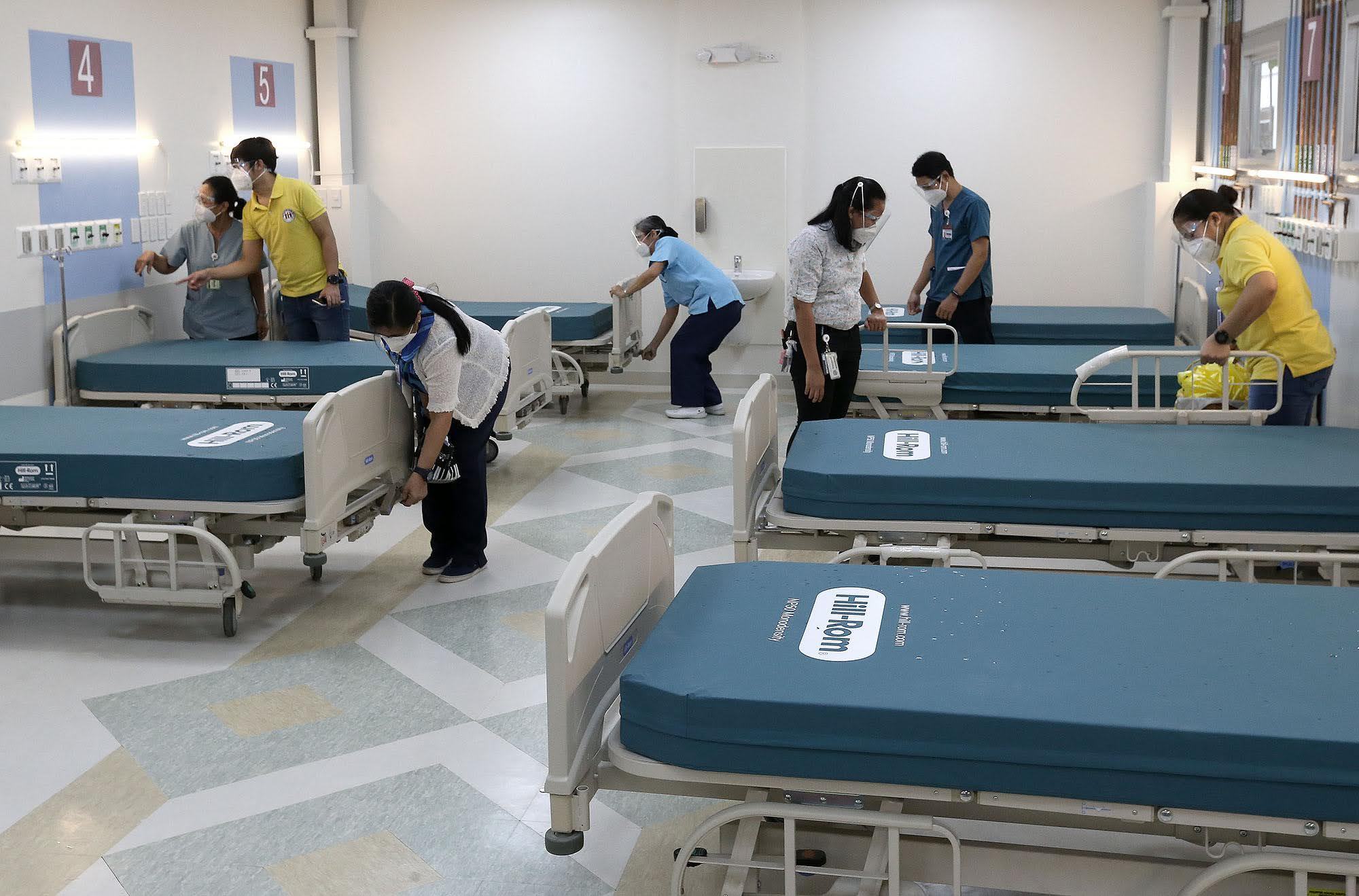
NEW AT PGH Health workers do some last-minute housekeeping, including a check on room pressure through a monitor at the new 44-bed COVID-19 isolation center at the Philippine General Hospital in Manila, which earlier stopped accepting walk-in patients due to a bed shortage. —RICHARD A. REYES
A health official on Thursday said there could be even more COVID-19 cases and there might be “additional peaks” in the number of infections in the coming days or weeks as the effects of this month’s lockdown would not yet be felt.
The highest number of new COVID-19 cases in a single day since the pandemic struck the country last year was the 18,332 logged on Monday, just as Metro Manila started shifting to the less restrictive modified enhanced community quarantine (MECQ) from two weeks of ECQ.
On Thursday, the Department of Health (DOH) recorded 16,313 new infections, bringing the country’s total case count to almost 1.9 million.
“In the next [few] days or weeks, we will probably be seeing additional peaks,” said Dr. Alethea De Guzman, director of the Epidemiology Bureau of the DOH.
“We started with around an average of 5,000 cases per day and we will really see, as we haven’t felt the full effect of our ECQ, there is really a probability that we will still see additional cases,” she said in an online briefing.
De Guzman said the DOH’s active case finding could also have contributed to higher case counts, referring to more aggressive testing of close contacts of positive cases and in areas with high numbers of infections.
She said it was “difficult to predict” when the numbers would peak since they change weekly.
INQUIRER PHOTO / RICHARD A. REYES
Alert level 4
De Guzman said 74 provinces, towns and cities around the country were declared under alert level 4 by the DOH, the most serious state of the contagion.
“It’s more challenging now, because the increase in cases is not centered here [in Metro Manila] alone,” De Guzman said, adding that cases are rising in the whole of Luzon, as well as in some regions in Visayas and Mindanao.
Alert level 4 is declared in a locality that is considered at moderate to critical risk because more than 70 percent of its hospital beds, including ward and intensive care unit (ICU) beds, are occupied.
The DOH on Thursday reported that 75 percent of all ICU beds in the country are occupied, while 69 percent of all COVID-19 ward beds and 63 percent of all isolation beds are in use. It said 54 percent of all mechanical ventilators in the country were also being utilized.
Health Undersecretary Maria Rosario Vergeire on Saturday said that based on projections by experts, Metro Manila, which was under ECQ from Aug. 6 to Aug. 20 and now under MECQ until the end of the month, may have up to 269,000 active COVID-19 cases by the end of September. The figure is much higher than the 58,000 she mentioned earlier this month.
Projections adjusted
Vergeire said projections have been adjusted since the region was downgraded to the less restrictive MECQ, the continuing spread of the more contagious Delta variant of the coronavirus and lax observance of minimum health protocols.
But she said that “if we fix our response” to the pandemic, the number could be reduced.
“We are looking at all aspects of our response so that we can prevent a further increase in the number of cases,” she said.
With the 16,313 new COVID-19 recorded on Thursday, the total case count rose to 1,899,200, the DOH said. Five laboratories failed to submit their data on time.
The 9,659 who recovered increased the number of survivors of the severe respiratory disease to 1,734,551, but the death toll rose by 236 to 32,728.
The deaths and recoveries left 131,921 active cases, the highest number since April 19.
Of the active cases, 96.1 percent are mild cases, 1.1 percent are asymptomatic, 1.2 percent severe, 0.6 percent critical and 1.03 percent moderate.
The DOH also said the positivity rate was 24.9 percent from the latest test results on Tuesday. This meant that of the 65,903 tested that day, nearly one in four was positive for SARS-CoV-2, the virus that causes COVID-19.